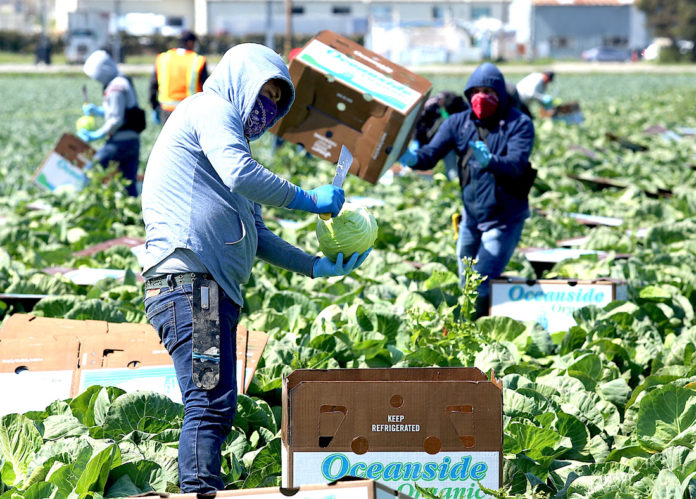
The Biden Administration’s push for a $15 minimum wage would have significant ramifications for farmers who utilize the H-2A program.
Veronica Nigh, economist with American Farm Bureau, discusses the financial impact a higher minimum wage would have on Southeast vegetable and specialty crop producers.
“The H-2A program stipulates you have to pay the highest wage of (either) the state minimum wage, the federal minimum wage, the AEWR (Adverse Effect Wage Rate) or the prevailing wage, which is something that we see more often in the northwest corner of the U.S. If we were to see a federal minimum wage go to $15 per hour, currently the H-2A (rate) in the southeast is $11.81 and in Florida it’s $12.08; if you had to pay the higher of AEWR or the federal minimum wage, it’s going to go up,” Nigh said.
Trickle-Down Effect
An increased minimum wage would have a trickle-down effect on a farmer’s workforce.
“If you’re paying your minimum wage employees a higher rate then all other wages for anyone more skilled than that are also going to go up. There is a concern that increasing minimum wage would be an inflation rate for all wages,” Nigh said. “It’s not unconnected to other wages.”
Other Requirements
This does not even consider producers’ other requirements. These include housing, transportation and meals that they must account for when utilizing the program.
Florida has already approved legislation that would increase its minimum wage to $15. But that threshold won’t be met until 2026.
What remains in question is whether the legislation regarding a $15 federal minimum wage will be passed at all? And in how quick of a timeframe?
“Look back 10 years ago. The AEWR in 2012 was $9.39 in Alabama. Today, it’s $11.81. Over that 10-year period, it went up $2.42, which would be less than what it would go up if the minimum wage would go up to $15,” Nigh said. “If an increase in the minimum wage would be put forward, how quickly it would go into effect and reach its full level is really important. Currently, federal minimum wage is $7.25. If that were to go up to $15, it’s obviously more than twice as much what it is now. How many years it takes to phase that in would be important.”
H-2A workers just received a bump in pay for the upcoming production season.









